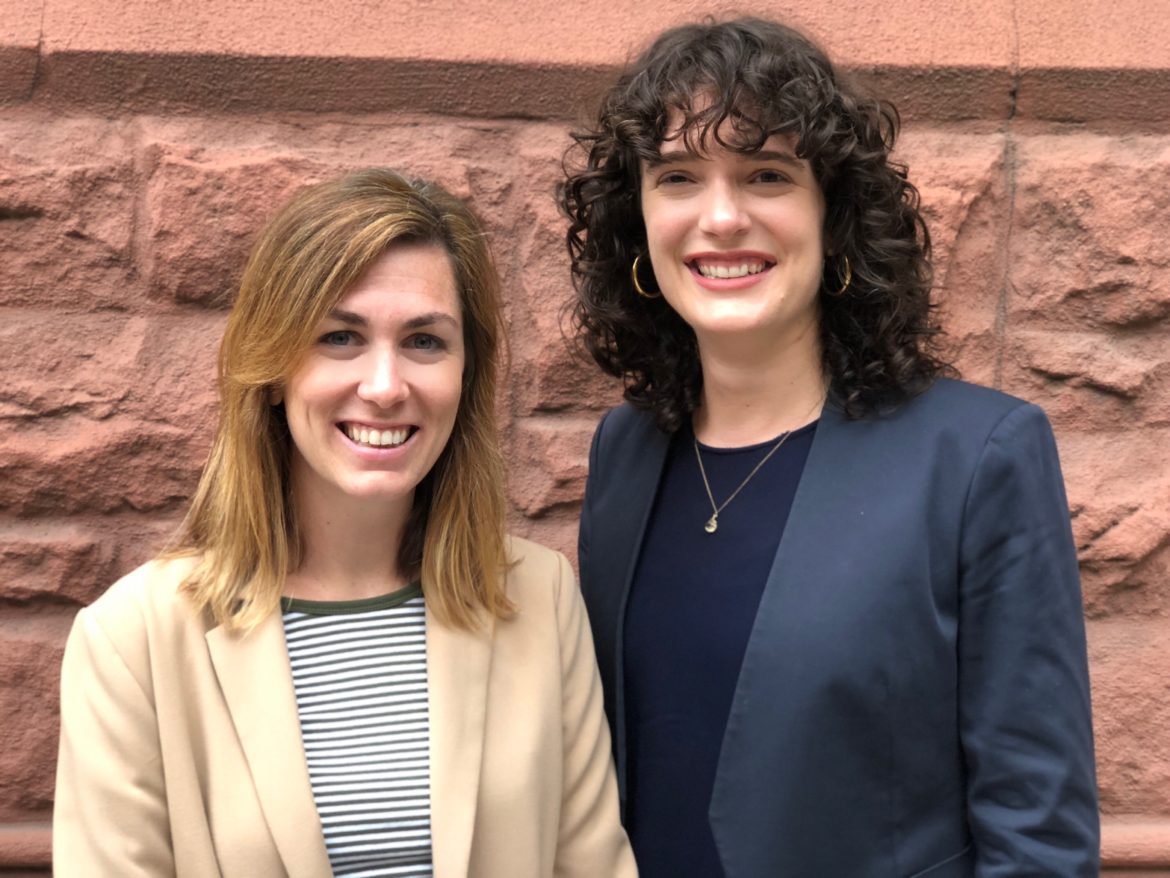![]() For many young people, adolescence can be a trying time. Over the course of a human life, adolescence marks the period of the most significant cognitive, emotional and physical change. According to the World Health Organization, adolescents are roughly defined as falling between the ages of 10 to 19 years old, with some researchers noting changes may begin as early as 8 years old and extend as late as 24 years old. While each adolescent’s experience is unique, researchers have identified key cognitive, emotional and physical features of this period of development.
For many young people, adolescence can be a trying time. Over the course of a human life, adolescence marks the period of the most significant cognitive, emotional and physical change. According to the World Health Organization, adolescents are roughly defined as falling between the ages of 10 to 19 years old, with some researchers noting changes may begin as early as 8 years old and extend as late as 24 years old. While each adolescent’s experience is unique, researchers have identified key cognitive, emotional and physical features of this period of development.

Rebecca Kinsella and Brenda Zubay
As social workers at Brooklyn Defender Services, a public defender office located in Brooklyn, N.Y., we specialize in working with youth ages 14 to 21 who are facing misdemeanor and/or felony charges. Often the youth are facing detrimental circumstances that include, but are not limited to, community violence, homelessness, placement in special education or living with tremendous and traumatic secrets. As social workers, we use our clinical skills to develop a trusting relationship with the youth and elicit sensitive information that assists with our advocacy and recommendations for alternative to incarceration program interventions.
“Your Honor, this defendant has been noncompliant. He tested positive for marijuana. He missed curfew 15 out of the last 16 nights.”
How many times have we heard or read a report about an adolescent that describes them in this way? For children who present challenging and off-putting behaviors, it can be easier for the judge and service providers to oversimplify the behaviors as “noncompliant.” As advocates, it is our duty to push the legal system to consider our client’s individual and nuanced experiences. While the criminal justice system can be very black and white, we use our unique clinical relationship with our clients to push judges and prosecutors to look at the grey area.
Hallmarks of adolescent development
Adolescence is the period in which the brain experiences the most change. The limbic system, which develops in earlier adolescence, is responsible for immediate reactions and emotions such as fear and aggression. The prefrontal cortex, however, develops much later during adolescence, with many researchers reporting that it is still changing well into adulthood. The prefrontal cortex is responsible for executive functioning, including critical thinking, reasoning and planning.
As the brain develops, the limbic system and prefrontal cortex become better connected. However, until they become better coordinated, what results are cognitive changes such as focus on the present (with little ability to plan for the future) and the emergence of risk-taking behavior. Behaviorally, one may observe that adolescents become increasingly invested in their friendships, allowing their peers to influence more of their decisions. Similarly, adolescents may disengage from their guardian, adopting a greater sense of self and challenging the rules and advice of adults in their lives.
The impact of trauma on development
For young people who have a history of trauma, adolescence can be even more challenging and chaotic. Trauma, as defined by the Substance Abuse and Mental Health Services Administration (SAMHSA), “results from an event, series of events, or set of circumstances experienced by an individual as physically or emotionally harmful or life-threatening with lasting adverse effects on the individual’s functioning and mental, physical, social, emotional, or spiritual well-being.”
The Adverse Childhood Experiences (ACEs) study was conducted with more than 17,000 participants over the course of two years (1995-97). It explored three categories of experiences: abuse (emotional, physical and sexual), neglect (emotional and physical) and family/household challenges (domestic violence, household substance use, mental illness in household, parental separation or divorce, incarceration of a household member).
Approximately two-thirds of participants reported at least one ACE; 21 percent reported sexual abuse, and 28 percent reported physical abuse. While the study failed to categorize community violence, more recent research has explored the exposure of adolescents to this type of trauma and found that 50 to 96 percent of adolescents living in urban communities report being exposed to it. The study shows there is a positive correlation between the reporting of an ACE and an increased risk for substance use, sexual and physical violence, mental illness, poor academic achievement and chronic physical ailments.
Trauma can also cause immediate damage to the teenage brain. When an individual is experiencing trauma, there is a release of the stress hormone, cortisol. A repeated release of cortisol causes an excess of the hormone in the brain. Due to the “always-on” state of the brain from excess cortisol, the brain is unable to develop as it should, which can lead to cognitive delays, language delays and impaired judgment. Therefore, the cognitive and emotional changes experienced by adolescents are compounded by the impact of trauma, which can result in severe attachment issues, increased substance use, significant impulsivity and a lack of understanding of cause and effect.
Implications for justice-involved adolescents
For more information on mental health, go to JJIE Resource Hub | Mental Health and Substance Use Disorders
Research shows that the rate of reported trauma is higher among adolescents involved in the juvenile justice system. According to the Northwestern Juvenile Project, a study of detained youth in Cook County, Ill., more than 90 percent of its participants reported experiencing at least one trauma, 84 percent reported more than one trauma and nearly 57 percent reported exposure to trauma six or more times. The most reported trauma was witnessing someone get severely injured or killed. Given what is known regarding trauma and its impact on self-regulatory skills, it is not surprising that the rates of trauma are higher among court-involved adolescents.
Adolescents appearing in the juvenile and adult criminal justice systems are in a unique position to engage in court-mandated programming that will simultaneously address clinical issues caused by trauma and resolve their court cases. However, it is important for judges, court staff and attorneys to understand the impact that a history of trauma may have on an adolescent appearing before them. Trauma should be considered when determining an adolescent’s noncompliant behavior both inside and outside the courtroom.
Therefore, when an adolescent exhibits noncompliant behaviors such as marijuana use, disengagement from service providers, staying out past curfew or fighting, one should ask: Is this behavior consistent with adolescent development? Do these behaviors indicate a trauma response? Perhaps it’s both.
If court-involved youth have any experience with trauma, there is much that the justice system can do to improve his or her legal outcome. First and foremost, it is important to acknowledge the challenges these young people are facing and apply an individualized treatment plan that is specific to the adolescent’s needs. For instance, group programming may not be appropriate for an adolescent who struggles to gain the trust of others.
It is important for the young person to have their voice heard in the development of a service or treatment plan. Promoting choice and autonomy for trauma-affected adolescents will help build trust and likely will result in more investment in the chosen program. When the court is confronted with noncompliance, there should be a balance of discussing failures and celebrating successes while using strengths-based language. For a young person who has experienced trauma, deficits-driven language may further alienate them from those who are trying to provide support.
Ultimately, the goal of these systems should be to provide young people the tools to develop into accomplished adults. Simply acknowledging that court-involved adolescents have a history and experiences that came before their system involvement will initiate a more trauma-informed approach.
Rebecca Kinsella is a senior social worker who works with adolescent clients facing criminal charges at Brooklyn Defender Services (BDS). Before that she worked in an alternative to incarceration program for youth.
Brenda Zubay, a defense-based social worker since 2008, works at Brooklyn Defender Services as a senior social worker specializing in education advocacy for adolescents facing criminal charges. She also co-coordinates the MSW student internship program.


This is a hugely important topic. Thank you for calling it to the’ attention of the public and for articulating this complex issue—the impact of trauma on justice involved youth—in a way that is relatable to readers from a variety of training and professional backgrounds. Your work is important and appreciated.